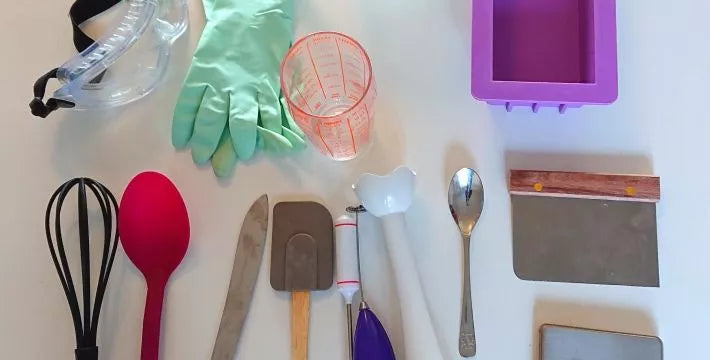
Make natural and skin-beneficial soaps at home
Make soaps at home
Cold saponification is a traditional method of making soaps that offers many benefits for the skin.
In this article, we'll explore the benefits of cold process soap making and walk you through a simple recipe for making your own soap at home.
We'll also cover the materials needed, where to buy them, and safety precautions to take during the process.
Cold saponification
It is a soap making technique that preserves the moisturizing and nourishing properties of the natural oils used.
Unlike the hot saponification method, which involves a higher temperature, cold saponification retains the benefits of ingredients, such as vegetable oils, butters, and natural extracts , for a gentle, skin-soothing washing experience. .
So why should you use soap made with cold saponification?
Here are some of its benefits:
-
Softness for the skin : Soaps made by cold saponification are naturally soft and delicate for the skin. Unlike commercial soaps which can contain irritating and drying agents, these soaps retain their natural glycerin, a powerful moisturizing agent.
-
Intense hydration : Soaps from cold saponification are rich in nourishing vegetable oils that deeply moisturize the skin. These soaps help prevent dehydration and skin dryness, leaving your skin soft and supple.
-
Natural ingredients : Cold saponification allows natural and organic ingredients to be used in soap making. You can customize your recipe by choosing oils, butters and extracts tailored to your specific needs.
-
Variety of options : The manufacture of soaps by cold saponification offers a multitude of creative possibilities. You can experiment with natural scents, colors, exfoliants, and skin-beneficial additives to create unique, personalized soaps.
Recipe to make your own soap:
Preparation

It is important to note that plastic equipment should not be used to mix oils and washing soda, as the washing soda can react with the plastic. It is best to use glass or stainless steel to avoid this reaction.
Here are also some ideas for molds to make cold saponified soap
- Silicone mold in the shape of a cube or rectangle
- Rectangular or square wooden mold
- Rectangular or square plastic mold
It is important to choose the right size mold for the amount of soap you are going to make. The mold should also be easy to unmold once the soap is ready.
Finally, here are some important safety guidelines to follow when making cold process soap:
- Always wear protective gloves and goggles when handling washing soda.
- Slowly add the washing soda to the oils and mix carefully to avoid splashing.
- Work in a well-ventilated area to avoid inhaling lye fumes.
- Avoid contact with bare skin or eyes, as washing soda can cause burns.
- Respect the cooling and hardening times to avoid any risk of burns or accidents.
Ingredients
- 400g olive oil
- 150g coconut oil
- 50g sweet almond oil
- 70g caustic soda
- 180g distilled water
- Essential oils (optional) to flavor the soap
Instructions
- Put on protective gloves and safety glasses.
- In a heatproof glass container, mix the water and caustic soda. Add caustic soda to water, not the other way around.
- Stir gently until the caustic soda is completely dissolved.
- In another glass container, mix the olive, coconut and sweet almond oils.
- When the caustic soda has cooled to about 38°C, slowly pour it into the oil mixture while stirring constantly.
- Keep blending until the mixture thickens and begins to form traces with the hand blender.
- Pour the mixture into a soap mold and let it sit for 24 hours.
- Unmold the soap and let it dry for about 4-6 weeks before using.
To make cold process soap at home, you will need a few basic tools and ingredients, including soap molds, scales, safety glasses, rubber gloves, and ingredients such as olive oil. , coconut oil, sweet almond oil, water and caustic soda. It is important to follow safety instructions and wear protective gear to avoid any hazards associated with handling caustic soda.
In short, cold process soap is a method of making handmade soap that offers many benefits for the skin and the environment.
With a few basic ingredients and tools, it's easy to create a unique, personalized soap at home.
Happy saponification!

